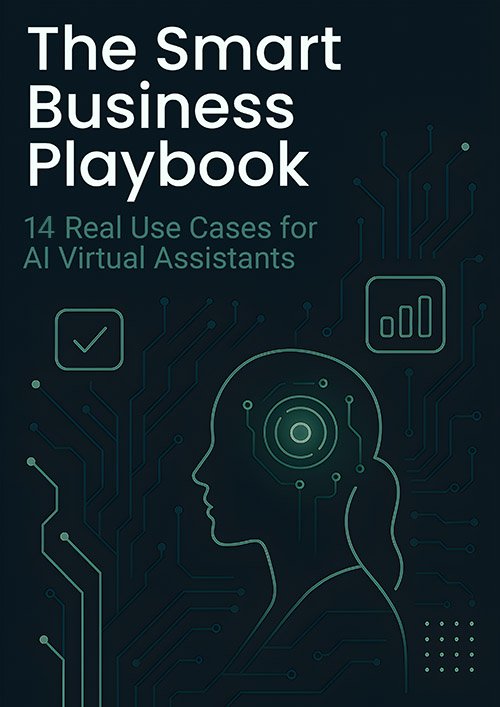Start your benefits navigation by thoroughly reviewing your total compensation package, including health insurance, retirement plans, and company-specific perks. You'll want to schedule a one-on-one consultation with HR, utilize online benefits calculators, and connect with current employees for practical insights. Compare offerings to previous employment, document important enrollment deadlines, maximize your 401(k) match, and leverage digital resources for ongoing benefits management. Following these essential steps will reveal the full value of your extensive benefits package.
Key Takeaways
- Schedule a one-on-one consultation with HR to understand your complete benefits package and get personalized guidance.
- Review all healthcare options carefully, comparing deductibles, copayments, and coverage levels between different available plans.
- Calculate and maximize employer 401(k) matching contributions immediately to avoid leaving free money on the table.
- Create calendar reminders for enrollment deadlines and maintain digital records of all benefits-related documentation.
- Connect with current employees to learn about their experiences and discover lesser-known perks not highlighted in official materials.
Review Your Total Compensation Package

When starting a new position, it's essential to thoroughly review your total compensation package to understand its full value beyond just the base salary.
Research indicates that employees who understand their benefits package report considerably higher job satisfaction, with 76% experiencing increased happiness levels.
To improve employee satisfaction, schedule a detailed review with HR to discuss your Employee Benefits, including health insurance, retirement plans, and wellness programs.
Don't overlook non-traditional perks that contribute to your work-life balance. Effective communication strategies between you and HR guarantee you'll maximize the value of your total compensation package.
Understanding these benefits not only enhances your financial security but also strengthens your connection to the company, as demonstrated by the 50% of employees who report increased loyalty after comprehending their complete benefits package. Additionally, a thorough review of benefits enrollment forms can help you identify the best options for your needs.
Understand Your Healthcare Options
Because healthcare costs greatly impact your financial well-being, understanding your available insurance options is essential for making informed decisions about your coverage.
Making informed healthcare coverage decisions requires understanding your insurance options, as medical costs significantly affect your financial health.
When reviewing your health benefits, carefully examine the coverage details of different plans like HMOs, PPOs, and HDHPs.
To make the most informed choice about your healthcare options:
- Calculate your potential expenses by reviewing deductibles, copayments, and out-of-pocket maximums
- Schedule HR consultations to clarify any questions about available plans
- Use online comparison tools to evaluate which plan best fits your medical needs
- Mark enrollment deadlines on your calendar to avoid coverage gaps
Take advantage of supplementary benefits like wellness programs and preventive care services to maximize your coverage value while maintaining compliance with plan requirements.
Maximize Retirement Benefits and Investment Opportunities

Building on your health benefits decisions, your next major financial consideration involves maximizing retirement benefits and investment opportunities.
During employee onboarding, you'll need to carefully review your retirement plans and understand the available investment options. If your employer offers a 401(k) match, prioritize contributing enough to capture the full match – it's fundamentally free money that can boost your savings by 50% or more.
Consider whether traditional or Roth contributions align with your tax situation, and aim to save at least 15% of your salary.
Take advantage of benefits information sessions and one-on-one meetings with financial planning advisors to optimize your investment strategy. Use online retirement calculators to project your savings needs and guarantee your choices align with your long-term retirement goals.
Schedule One-on-One Benefits Consultations
You'll gain invaluable clarity about your benefits package through a scheduled one-on-one consultation, where you can ask specific questions and receive personalized guidance from HR professionals.
By engaging directly with benefits specialists, you're establishing a reliable support channel that helps build trust and guarantees accurate information for your decision-making process.
Your consultation presents the perfect opportunity to understand complex benefits options, examine available plans, and develop strategies to maximize your total compensation package.
Clear Questions Get Answers
When maneuvering through the complexities of benefits packages, scheduling one-on-one consultations with HR representatives proves invaluable for new hires.
These personalized sessions create a comfortable environment where you can openly discuss your specific needs and concerns with your HR team.
To maximize your benefits consultation, prepare clear questions about:
- Coverage options that align with your lifestyle needs
- Enrollment deadlines and required documentation
- Cost implications and premium structures
- Additional benefits you mightn't be aware of
Your active participation in these consultations leads to better-informed decisions about your benefits package.
Research shows that 78% of employees report higher satisfaction when they fully understand their benefits through clear communication.
HR Support Builds Trust
One-on-one benefits consultations serve as the foundation for lasting trust between employees and HR representatives. These personalized sessions enable you to receive tailored guidance that addresses your specific needs, whether you're a recent graduate or an experienced professional.
Through direct HR support, you'll gain an extensive understanding of your benefits package while building valuable rapport with your HR team.
Statistics show that effective benefits communication drives employee satisfaction, with 78% of employees reporting higher job happiness when they clearly understand their benefits.
You'll find that one-on-one consultations create an environment where you can ask specific questions and receive immediate clarification. This personalized approach demonstrates your organization's commitment to your wellbeing, as proven by the 100% increase in trust levels when benefits are communicated effectively.
Maximize Your Benefits Package
To maximize the full potential of your benefits package, scheduling a one-on-one consultation with HR representatives is essential during the onboarding process.
These personalized benefit information sessions guarantee you'll understand the benefits available and make informed decisions about your coverage options.
During your one-on-one meetings with HR, you'll receive:
- Customized guidance based on your role and demographics
- Immediate answers to your specific questions
- Detailed explanations of available resources
- Clear instructions for benefits enrollment and utilization
Effective communication during onboarding greatly improves your employee experience, with research showing that 78% of employees report higher satisfaction when they fully comprehend their benefits.
Research Company-Specific Perks and Programs
Before scheduling your benefits consultation, you'll want to thoroughly examine your company's online benefits portal and available documentation to understand the full scope of perks and programs offered.
You can gather essential details about unique offerings, such as wellness initiatives, student loan assistance, or professional development opportunities that mightn't be immediately apparent during standard orientation sessions.
Connect with current employees to gain practical insights about their experiences with specific benefits and learn which programs have provided the most value in their roles. Additionally, consider how continuous growth opportunities can enhance your overall job satisfaction and align with your career aspirations.
Research Benefits Online First
Since every company offers unique benefits packages, taking time to research your organization's specific perks and programs before onboarding can give you a significant advantage.
Visit your company's website or employee portal to gather essential information about available benefits and familiarize yourself with the options.
When conducting your online research, focus on these key areas:
- Healthcare plans and wellness programs offered
- Retirement benefits and investment options
- Professional development opportunities and training resources
- Flexible work arrangements and employee assistance programs
Utilize online tools like benefits calculators and review employee testimonials to better understand how these offerings work in practice.
This preparation will enable you to ask informed questions during your onboarding session and make strategic decisions about your benefits enrollment from day one.
Ask Current Employee Experiences
Why rely solely on official documentation when your colleagues can provide invaluable firsthand insights about company benefits? By engaging with current employees, you'll discover how they're using benefits effectively and learn about lesser-known perks that mightn't be prominently featured in standard onboarding materials.
Your coworkers' testimonials can help you better understand benefits by sharing real examples of how wellness programs, professional development opportunities, and flexible work arrangements have enhanced their work experience.
During the onboarding benefits selection process, these firsthand employee experiences prove especially valuable in making informed decisions that align with your needs. You'll also gain deeper appreciation for the complete benefits package while building connections with colleagues who've successfully navigated the same choices you're now facing.
Document Important Deadlines and Enrollment Windows

Managing your benefits enrollment deadlines requires careful attention to detail and systematic documentation. You'll need to track key dates throughout your onboarding process to guarantee you don't miss vital enrollment windows for health insurance and retirement plans.
Set up your documentation system by following these essential steps:
- Create calendar reminders for all enrollment deadlines at least two weeks in advance.
- Download and review your company's benefits guide to identify submission cutoff dates.
- Maintain a digital folder of required documentation and completed forms.
- Record dates of your onboarding sessions and benefits orientation meetings.
Stay proactive by participating in Q&A sessions to clarify any deadline uncertainties. Additionally, consider utilizing automated workflows to ensure your completed forms are routed efficiently to the appropriate personnel.
Keep your documentation current by regularly checking for policy updates or regulatory changes that might affect your benefits enrollment timeline. Your diligence in tracking these important dates will help guarantee seamless benefits activation.
Compare Benefits With Previous Employment
A thorough comparison of your benefits packages between employers helps you make informed decisions about your new coverage and identify any gaps that need addressing.
As a new hire, it's crucial to understand both your health insurance options and retirement plans in detail, as these components greatly impact your long-term financial security.
Create a side-by-side comparison of employer contributions, coverage levels, and additional perks.
Pay special attention to benefits communication materials, noting differences in deductibles, premiums, and wellness programs.
Review retirement matching policies carefully, as they can vary greatly between employers.
Document any discrepancies you find, particularly in health coverage and employer contribution rates, to discuss with your HR representative.
This detailed analysis guarantees you'll maximize your new benefits package and maintain appropriate coverage during your change.
Leverage Digital Resources and Tools

Today's digital landscape provides powerful tools to streamline your benefits enrollment process and enhance your understanding of available options. By leveraging your online benefits portal, you'll gain immediate access to information that helps you make informed decisions about your coverage.
Your digital engagement with benefits should include:
Digital engagement transforms benefits management from a yearly task into an interactive, ongoing process that empowers informed decision-making.
- Exploring interactive online calculators to evaluate different coverage scenarios.
- Participating in virtual HR sessions for detailed explanations.
- Reviewing personalized digital welcome materials with thorough benefit descriptions.
- Utilizing mobile apps for real-time benefits management.
Implement a structured communication strategy by regularly accessing these digital resources. You'll find that these tools simplify complex benefits information and help you track important deadlines. Additionally, many onboarding software solutions, like Paycor, offer automated engagement features that can further enhance your benefits understanding.
Stay proactive by checking for updates and utilizing available interactive features to maximize your benefits understanding and selection process.
Connect With Benefits Mentors and Peers
You'll boost your benefits knowledge by actively participating in peer networks and scheduling consistent meetings with experienced mentors who can answer your questions and share practical insights.
Building connections with colleagues who've successfully navigated their benefits choices will provide you with real-world examples and strategies for maximizing your package.
Consider sharing your own benefits experiences and success stories in group discussions, which helps create a collaborative environment where everyone can learn from each other's decisions and outcomes.
Build Strong Peer Networks
Building strong peer networks during benefits onboarding creates invaluable support systems that enhance your understanding and confidence in making benefits decisions.
Through effective communication with colleagues who've navigated similar challenges, you'll gain practical insights that help employees make informed choices about their benefits packages.
To build strong peer networks and understand what's available to you, follow these key steps:
- Join employee resource groups focused on benefits discussions
- Participate in informal lunch-and-learn sessions with experienced colleagues
- Engage in open communication channels dedicated to benefits questions
- Schedule one-on-one meetings with designated benefits mentors
This collaborative approach markedly reduces enrollment anxiety and improves benefits utilization.
With 78% of employees reporting higher satisfaction when they clearly understand their benefits, establishing these connections early is essential for your long-term success.
Schedule Regular Mentor Meetings
While steering through complex benefits decisions can feel overwhelming, scheduling regular mentor meetings provides essential guidance and support throughout your onboarding journey.
These structured sessions create opportunities to discuss your benefits options with experienced colleagues who've navigated similar choices before. Your mentor can offer valuable insights about HSAs, retirement plans, and other complex benefits topics, helping you make well-informed decisions.
Through consistent benefits education sessions, you'll gain practical knowledge about maximizing your company's offerings while building meaningful connections within your workplace community culture.
These ongoing support meetings guarantee you're never left wondering about your benefits package, and you'll feel more confident as you integrate into your new role. Regular check-ins with your mentor reinforce your understanding and encourage full utilization of available benefits.
Share Benefits Success Stories
Learning from real success stories can transform your benefits experience from confusing to crystal clear.
When you share benefits success stories with colleagues, you'll understand what's working and gain practical insights from their experiences. HR Leaders encourage this peer-to-peer exchange because employees feel supported when they hear how others have successfully navigated their benefits packages.
Establish effective communication channels to share success stories through:
- Monthly virtual coffee chats with benefits mentors
- Internal discussion boards dedicated to benefits experiences
- Team meetings where employees highlight benefits wins
- Quarterly newsletters featuring employee testimonials
Plan Your Benefits Strategy Long-Term
To create a sustainable benefits package that serves your organization for years to come, you'll need an all-encompassing strategy that evolves with your workforce.
Start by implementing regular assessments of employee needs and preferences through surveys and focus groups. This data-driven approach helps you understand what new employees value most and enables you to communicate benefits effectively through an online portal.
Regular assessment of employee preferences creates a foundation for data-driven benefits decisions that resonate with your workforce's evolving needs.
Consider partnering with a PEO to access cost-effective, diverse benefits options that align with your organizational goals.
Develop a year-round communication strategy to guarantee successful benefits utilization. When employees understand their benefits during onboarding, they're 85% more likely to use them. Additionally, it's crucial to offer flexible work arrangements as part of your benefits strategy to attract and retain top global talent.
Monitor satisfaction levels continuously and adjust your offerings based on feedback to maintain competitiveness and reduce turnover driven by benefits dissatisfaction.
Frequently Asked Questions
What Are the 5 C's of Onboarding?
You'll navigate onboarding through Compliance for policy familiarization, Clarification for training programs, Culture for cultural assimilation, Connection for employee engagement, and Check-back for feedback mechanisms in your new role.
What Are 4 C's for Onboarding?
While onboarding challenges seem complex, you'll master them through the 4 C's: Compliance (following rules), Clarification (understanding roles), Culture (embracing values), and Connection (building relationships) for effective employee engagement.
What Are the 5 Pillars of Onboarding?
Your onboarding process encompasses five essential pillars: preparation before arrival, orientation for benefits education, training programs for skill development, integration into company culture, and feedback to guarantee employee engagement success.
What Are the 3 Most Important Elements of Successful Onboarding?
Your three onboarding cornerstones should include employee engagement strategies that spark connection, effective communication techniques that bridge understanding, and structured training programs that build competence through mentorship and feedback.


